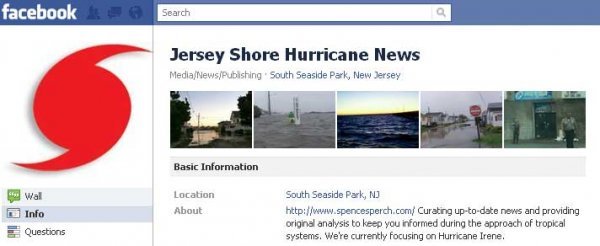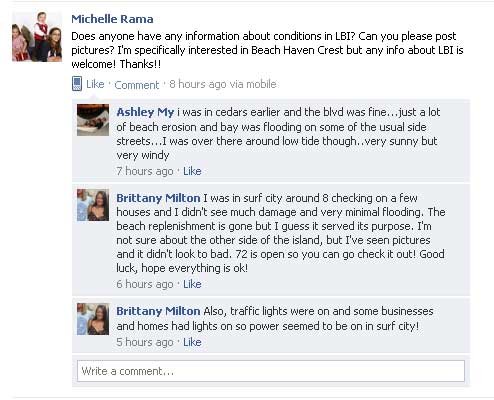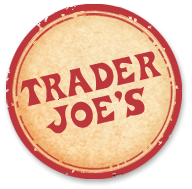- Aug
- 29
Posted on August 29, 2011 by Nora DePalma
***Help Irene victims in the Bahamas via Kitchen and Residential Design ***
Social media isn’t just all fun and branding anymore. Twice in seven days, I’ve seen it firsthand become the future of breaking news events: reporting faster and more detailed than CNN or The Weather Channel.

Social Media and the East Coast Earthquake
Our conference table and chairs started swaying side to side during a client meeting in Long Island City, NY. We all looked at each other and then looked around. Did a really BIG truck just go by? Did terrorists strike in Manhattan? That wasn’t just an earthquake in NY, was it?
“Check CNN’s site,” someone yelled, as we all lunged for our laptops and cell phones. “I should get a breaking news email in a minute,” someone else said.
I checked my Twitter stream on my smartphone. For the past two years, I’ve learned most breaking news on Twitter, so it didn’t even occur to me to turn on the TV or log on to CNN.
Sure enough, faster than you could say, “I don’t know why the darn Internet is being so slow,” there it was: reports of shaky ground from Virginia to Vermont. I was the first at the conference table to confirm it was an earthquake, and the first to report that the epicenter was in VA .
Social Media and Hurricane Irene
As all social media users know, the medium is not for monologues, it’s for dialogues: two-way communications. A savvy social-media civilian on the Jersey shore established Jersey Shore Hurricane News on Facebook late last week to facilitate real-time ground-truth reports of Hurricane Irene related news for New Jersey.

The group surged from about 1,000 members Friday night to more than 26,000 by Monday morning. Fans were seeking and sharing information on road closures and re-openings, as well as where to find gas stations that were still open and where to buy generators.
We got out of the NY/NJ area well in advance of Hurricane Irene, but I was agonizing over the news from my hometown of Long Beach Island, NJ.
In the Dark Ages—say, 1981 and earlier—we turned to our trusted network or local affiliate TV news anchor of choice when disaster struck. Count me now among the believers that any of us can be breaking news reporters as long as we can see and hear, and then access a publishing platform to report what we’ve seen and heard.
While repeatedly reminding fans “We are not professional forecasters; this is a service to keep you informed,” Jersey Shore Hurricane News delivered news on Facebook faster and more accurately than any other news source. The accuracy came from the participants, answering questions about rumors and sharing ground-truth observations.
No doubt this will be back for future disasters. And so will I.
- Aug
- 23
Posted on August 23, 2011 by Joel Williams

 The new DecoGuard from Hy-Lite, a U.S. Block Windows Company, represents the industry’s first impact-resistant, decorative glass window that offers remodelers and builders both safe and stylish protection from the dangers associated with hurricanes and tropical storms.
The new DecoGuard from Hy-Lite, a U.S. Block Windows Company, represents the industry’s first impact-resistant, decorative glass window that offers remodelers and builders both safe and stylish protection from the dangers associated with hurricanes and tropical storms.
The Hy-Lite DecoGuard window meets the stringent building code requirements for Gulf and coastal regions according to “wind zone 4” specifications. Constructed from a heavy-duty vinyl frame and impact-resistant laminated insulated glass, the 48-inch square designer window has an elegant floral design pattern that is kiln-fired directly onto the interior glass for long lasting beauty and durability.
Learn more here.
- Aug
- 15
Posted on August 15, 2011 by Nora DePalma
The average time spent on a kitchen bath dealer website ranges anywhere from about 43 seconds up to about 2 minutes and 35 seconds, according to Kitchen & Bath Design News columnist, Leslie Hart in the June 2011 issue.
Leslie identifies what every kitchen and bath dealer must provide on their website to give your best sales prospects what they need. Read more at Kitchen & Bath Design News.
- Aug
- 9
Posted on August 9, 2011 by Joel Williams
Circulator pumps were the highlight of this month’s Reeves Journal magazine that featured a case study from global pump and pump systems manufacturer Grundfos. Over the last five years, circulators used for hydronic and radiant heating systems have become more energy-efficient thanks to ECM (Electronically Commutated Motor) technology. The intelligent speed control these circulators provide is drastically reducing energy use without sacrificing performance.
magazine that featured a case study from global pump and pump systems manufacturer Grundfos. Over the last five years, circulators used for hydronic and radiant heating systems have become more energy-efficient thanks to ECM (Electronically Commutated Motor) technology. The intelligent speed control these circulators provide is drastically reducing energy use without sacrificing performance.
To understand why this technology is so appealing, put yourself in the shoes of plumbing contractor Mike Wolking, who was asked to design a plumbing and hydronic heating system for a custom solar home in south-central Colorado.
In addition to specifying a system that could provide space heating and domestic hot water for the 2,300-square-foot, two-story ranch, Wolking’s design had to consume roughly 40 percent less energy. Read more here.
- Aug
- 1
Posted on August 1, 2011 by Nora DePalma
This is a tale of two companies forging a very different path to profitability: Patagonia and Trader Joe’s. One is a story I heard. The other is a story I Iived.
 Patagonia: At the recent Emerald Circle summit hosted by our wonderful friends at Green Builder Media, one of the most compelling speakers was Patagonia CEO Casey Sheahan. Faced with a recession-generated business slowdown, Sheahan came home one day and told his wife Tara that he thought he would be instituting layoffs.
Patagonia: At the recent Emerald Circle summit hosted by our wonderful friends at Green Builder Media, one of the most compelling speakers was Patagonia CEO Casey Sheahan. Faced with a recession-generated business slowdown, Sheahan came home one day and told his wife Tara that he thought he would be instituting layoffs.
Tara asked him: “Are you leading from fear or are you leading from love?”
Not a question I suspect a lot of CEOs get. Or consider. Businesses exist to make money, not to help people feel the love. But it made Sheahan stop and think. Did he have alternatives? Had they found all the possible efficiencies? The market would be back at some point. What about the costs of recruiting and training? Eventually, he decided on the following:
• No layoffs, but severely limited raises and no bonuses.
• Direct and honest communications with employees about the decision and the implications.
• Reducing other operating expenses by 20 percent.
Not every job was saved. The reduction in operating expenses meant identifying and terminating the few poor performers. No one likes to tell anyone they no longer have a job, but taking a hard line helped keep everyone else employed.
“Jack Welch was famous for his strategy of focusing on the 5% of employees who were poor performers,” Sheahan said. “I like to focus on the 95% who are good to excellent.”
Results: “Business didn’t just increase. It went through the roof,” Sheahan told us. He said his employees became more motivated than ever, realizing that things could have gone very differently. The resulting loyalty improved both retention and performance.
The good performers were rewarded. The business and Sheahan were rewarded.
Which brings us to Trader Joe’s.
Our son worked at a Trader Joe’s for about a month when he was involved in a horrible accident on his way home from work. Here is the note he sent to Trader Joe’s last month:
Last fall, October 21 to be exact, I fired up my motorcycle and headed on home. Not 5 minutes in to the ride, a car attempting to make an illegal u turn cut from the right lane in to the left and I collided with them. Long story short, I spent 6 weeks in the hospital, and was lucky to be alive.
My crew only knew that I did not show up for work the next day, until one of the EMT’s came by and informed them of what happened.
On my first return visit there was practically a line of people waiting to greet me. I couldn’t believe it. They had only known me for a month, but everyone welcomed me back as if I was family. Genuine feelings and concern were shown by every single person. I have never experienced anything like that before.
As I had only been employed for a month, I did not qualify for any leave. When I returned, my Captain assured me I was welcome to return as soon as I was ready.
I have now been back to work for almost 6 months. I still have various problems that limit me to working 4 days a week, and sometimes force me to leave early. The family here has stepped in every chance they have to help me through the work day.
None of this is shown in the job description or any benefits package. It just goes to show what a company built on simple values can create not just for its customers, but for its employees. The grocery business is about stocking shelves. The TRADING business is about building relationships and maintaining them through consistency, integrity, and apparently, random acts of kindness performed on a regular basis. WOW.
Alex is definitely a performer, a hard-worker with exceptional customer service skills. Trader Joe’s clearly recognizes that. But in a recession, there’s no reason to think they could not have easily replaced him.
They chose to stand by him.
Results: Many of our friends already shopped Trader Joe’s for their unique shopping experience. Now, no one in our circle of friends and colleagues will shop anywhere else, given the choice. More Trader Joe’s business results here.
A brave new world for business? Not for all; some brands will continue to invest in obfuscation to tell their story. Other will invest in government lobbying power to avoid competition.
Others will compete just as fiercely, but—dare I say it?—with love. Because that’s what consumers are increasingly demanding, according to studies like this showing that consumers are taking values into account in their purchase decisions.
It’s the return on relationships. And it works.








